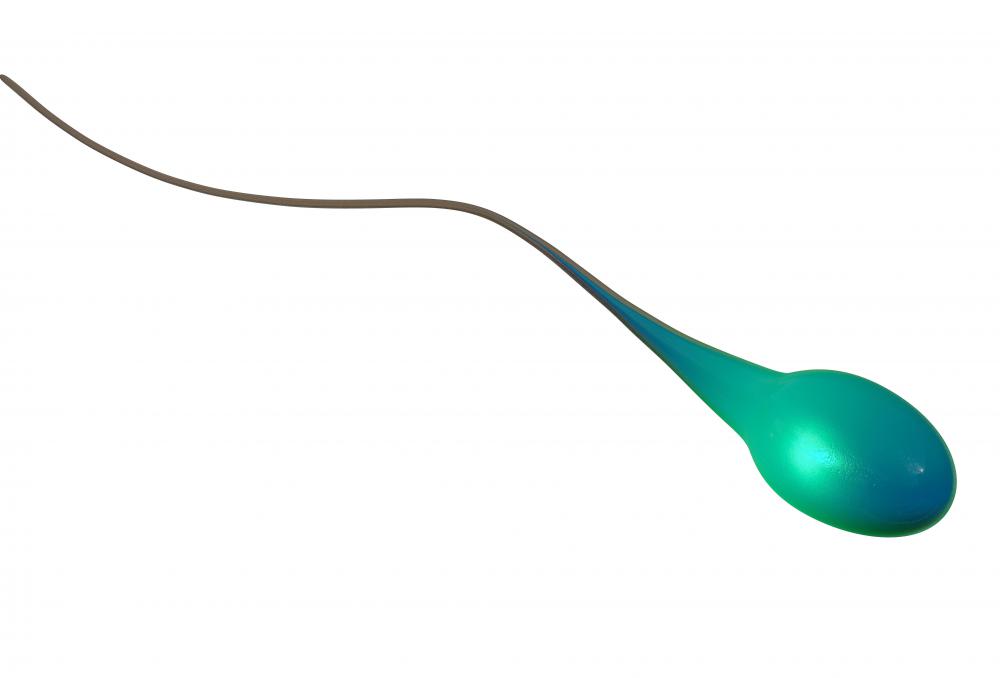At TheHealthBoard, we're committed to delivering accurate, trustworthy information. Our expert-authored content is rigorously fact-checked and sourced from credible authorities. Discover how we uphold the highest standards in providing you with reliable knowledge.
What is Spermatogenesis?
Spermatogenesis is the process of making sperm cells, or developing immature germ cells known as spermatogonia into mature sperm cells called spermatozoa. A sperm cell is the male reproductive cell that fertilizes the female egg in sexual reproduction. A male’s ability to reproduce depends on a high quality and quantity of sperm; therefore, spermatogenesis occurs continually from the time of puberty until death. The stages included in this process are spermatocytogenesis, spermatidogenesis, and spermiogenesis.
Spermatogenesis begins in the seminiferous tubules, which, depending on their type, look like small, straight or twisted noodles in the testicles. The inside of the seminiferous tubules are lined with Sertoli cells and spermatogonia. The Sertoli cells are often referred to as “nurse” cells because they aid in the development of sperm by eating the waste materials of spermatogenesis and directing the cells through the canals of the tubules.

During spermatocytogenesis, the spermatogonia divides through mitosis to form two diploid cells called primary spermatocytes. Mitosis is a type of cell division in which a parent cell grows and then splits in half to form two identical daughter cells. The primary spermatocytes, which have twice the amount of genetic material as a normal cell, must then undergo meiosis I.

In this type of division, the parent cell splits to form two diploid daughter cells, which have half the chromosomes, or genetic material, as the parent cell. The resulting secondary spermatocytes, which have the normal amount of chromosomes, must then go through meiosis II to form spermatids. This brief portion of spermatogenesis is called spermatidogenesis.

Spermatids have only half the total amount of chromosomes. This is because when the sperm joins with the egg, which also contains only half the amount of necessary chromosomes, they form a full set of chromosomes made from both the male and female genes. The random halving and pairing of chromosomes increases genetic variability, an important component in evolution.

During spermiogenesis, the final phase of spermatogenesis, the sperm cell grows a tail and reaches full maturation. In the first stage of this process, the Golgi phase, the spermatid’s genetic material becomes packed tightly together to form a nucleus and the spermatid undergoes structural change. While it was formerly circular, the mid-section begins to bulge and the cell extends at one end to form a Golgi apparatus, which creates chemicals called enzymes. Next, the Golgi apparatus envelops the nucleus to form an acrosomal cap during the cap phase. The enzymes released by the acrosomal cap break down the wall of the female egg during fertilization, allowing the nucleus of the sperm to enter the egg and join the with the egg’s nucleus.

In the following acrosomal phase, the sperm cell grows a tail that helps it to move. The sperm cell rotates itself around in the wall of the seminiferous tubules so that its tail is facing toward the lumen, or inner space, of the tube. With the help of a hormone called testosterone, the Sertoli cells consume the excess cellular materials in the maturation phase. In another process known as spermiation, the mature sperm cells are released into the lumen and propelled into the epididymis, a small, coiled tube located between the back of the testicle and the vas deferens. Here, the sperm becomes motile, or capable of moving on its own, and ready to be ejaculated into the female during sex.
AS FEATURED ON:
AS FEATURED ON:















Discussion Comments
Drosophila is a species of small fly commonly called the fruit fly. It's often used in the study of genetics because it's easily made in the lab going from egg to adult in 10 days or less.
Post your comments